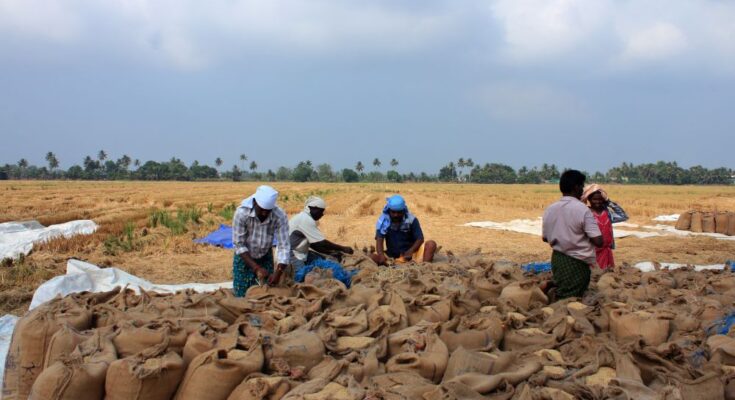With 54.6 percent of the total workforce in the country engaged in agricultural and allied sector activities (Census 2011) and contribution of 16.5 percent to the country’s Gross Value Added (GVA) for the year 2019-20 (at current prices), agriculture sector plays an important role in India’s economy.
India is the second highest agriculture producer in the world with gross agriculture production of USD 539 billion in 2018 and has the largest arable land of 156 million hectares. India leads production worldwide in several commodities, including shrimps, spices, fruits such as mango, papaya, bananas, is the second largest producer of rice and has the largest population of buffaloes. With foodgrain and horticulture production increasing year on year India has a strong position on production front. Despite this, India’s share of world trade is just about 2.5 percent and the farmer realisation per unit area is low.
Thus, there is a clear need to develop competitive agri value chains to support enhanced value addition and exports. With demand shifting to high value commodities focus on supply chain initiatives is gaining centre-stage and the need of efficient post-harvest handling, seamless supply chain connectivity and access to competitive markets is further amplified. Recognising the need steps have been taken by Government of India towards aggregation for bringing scale, bridging infrastructure gaps and improving market access, demonstrating a significant shift to a demand driven ecosystem.
The three farm laws offer three basic freedoms to the farmer. One, he can now sell anywhere to anyone, freeing him from having to sell to a monopoly cartel at the APMC mandi. Second is the freedom to store inventory which was constrained so far by stocking limits in the Essential Commodities Act. This gives incentive for cold storages to come up, to whom farmers can now sell directly. Third, it gives farmers freedom to make forward contracts, transferring their risk to businessmen, leading hopefully to a freedom to lease unviable lands for a job and a share in profits.
The Agricultural Produce Marketing Committee (APMC) is an obsolete institution from an age of scarcity, meant to protect the farmer but becoming his oppressor, a monopoly cartel fixing low prices for the farmers’ produce, forcing distress sales. The reforms have broken this monopoly and since June 2020, out-of-mandi farmer sales have grown sharply while mandi transactions have plunged 40 percent. This reform needs to be followed up with a stable policy on exports, unlike the present ‘start-stop’ policy, under which onion exports were recently banned. This is why farmers hanker after MSP (minimum support price). However, other items like oilseeds, maize among others can be added so that excess production of one crop is not done, till the new reforms bear fruit and instil confidence in farmers’ community.
All three laws will reform the Indian agriculture market. Farmers will get a choice to sell their produce as there will be more buyers. It will also lead to the development of agriculture business and create infrastructure for marketing, storage and transportation of farm produce. It will pave the way for the reform of the APMCs or mandis.
Both, government and farmer unions must work together in creating consensus and work jointly towards growth of Indian agriculture sector and economy.
(Jasmohan Singh is the Chairman of CII Northern Region Committee on Food Processing, Agriculture and Dairy & Managing Director of Frick India Ltd. Views expressed in the article are author’s own.)




